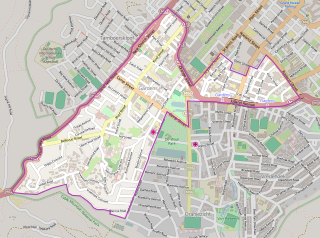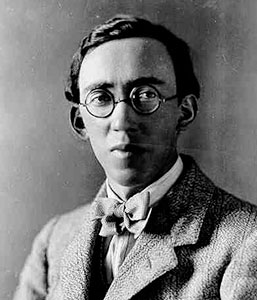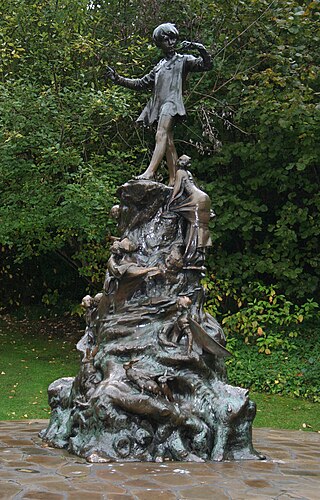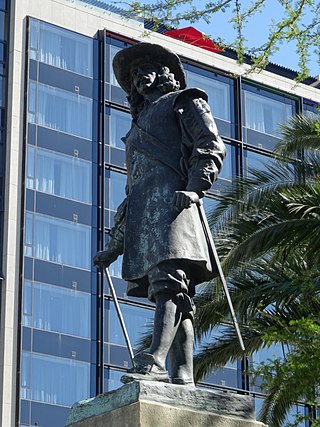
Cecil John Rhodes was an English mining magnate and politician in southern Africa who served as Prime Minister of the Cape Colony from 1890 to 1896. He and his British South Africa Company founded the southern African territory of Rhodesia, which the company named after him in 1895. He also devoted much effort to realising his vision of a Cape to Cairo Railway through British territory. Rhodes set up the Rhodes Scholarship, which is funded by his estate.

The Union Buildings form the official seat of the South African Government and also house the offices of the President of South Africa. The imposing buildings are located in Pretoria, atop Meintjeskop at the northern end of Arcadia, close to historic Church Square. The large gardens of the Buildings are nestled between Government Avenue, Vermeulen Street East, Church Street, the R104 and Blackwood Street. Fairview Avenue is a closed road through which only officials can enter the Union Buildings. Though not in the centre of Pretoria, the Union Buildings occupy the highest point of Pretoria, and constitute a South African national heritage site.

Sir Herbert Baker was an English architect remembered as the dominant force in South African architecture for two decades, and a major designer of some of New Delhi's most notable government structures. He was born and died at Owletts in Cobham, Kent.
The South African College Schools is a public English medium primary and high education institution situated in Newlands - part of the Southern Suburbs region of Cape Town in the Western Cape province of South Africa. Founded in 1829, it is the oldest continuously run school in South Africa.

The Rhodes Memorial is a large monument in the style of an ancient Greek temple on Devil's Peak in Cape Town, South Africa, situated close to Table Mountain. It is a memorial to the English-born South African politician Cecil John Rhodes, was designed by architect Herbert Baker and finished in 1912.

Gardens is an affluent inner-city suburb of Cape Town located just to the south of the city centre located in the higher elevations of the "City Bowl" and directly beneath Table Mountain and Lion's Head. It is home to several national museums such as Iziko South African National Gallery and the Iziko South African Museum. The University of Cape Town also houses its Fine Arts department in the suburb, at Michaelis School of Fine Art. Company's Garden, South Africa's oldest garden, a public park and heritage site is a focal point of the suburb. The area is also home to the oldest synagogue in Southern Africa, the Old Shul and its successor, the Gardens Shul, "The Mother Synagogue of South Africa."

Vernon March (1891–1930) was an English sculptor, renowned for major monuments such as the National War Memorial of Canada in Ottawa, Ontario, the Samuel de Champlain Monument in Orillia, Ontario, and the Cape Town Cenotaph, South Africa. Without the benefit of a formal education in the arts, he was the youngest exhibitor at The Exhibition of the Royal Academy of Arts.

The Horse Memorial is a provincial heritage site in Port Elizabeth in the Eastern Cape province of South Africa, in memory of the horses that served and died during the Second Boer War, where Britain brought a large number of horses to South Africa. Designed by Joseph Whitehead, the life-sized bronze memorial features a kneeling soldier presenting a bucket of water to a service horse.
Anton Anreith was a sculptor and woodcarver from Riegel near Freiburg in Breisgau, Baden, Germany. He is known for numerous sculptural embellishments that adorn buildings in the Cape region of South Africa, thought to represent the crowning achievement of the Cape Baroque style.

Sydney March (1876–1968) was an English sculptor. His primary focus was portrait busts and other sculptures of British royalty and contemporary figures, as well as war memorials. The second-born of eight artists in his family, he and his siblings completed the National War Memorial of Canada after the death of their brother Vernon March in 1930, who had created the winning design. It is the site in Ottawa of annual Remembrance Day ceremonies.

The Livesey Hall War Memorial, in Lewisham, Greater London, commemorates the fallen of World War I and World War II who had been employed by the South Suburban Gas Company of London. It is also a tribute to those employees who served in the wars. The monument was designed and executed by the British sculptor Sydney March, of the March family of artists.

The Japanese Lantern Monument is a symbol of political relations between the Japanese government and South Africa. This monument is currently located at the Company's Garden in Cape Town. A lantern is portable light device used as a source of light or touch like mechanism to illuminate an area of darkness. In traditional Japanese society, lanterns have been very significant in both culture and religion. In 1933, the Japanese government offered to construct a lantern monument in the Company's Garden which was handed to the Government of South Africa as a symbol of appreciation for their benevolence towards Japanese immigrants during World War I.

The Cenotaph is a war memorial on Heerengracht Street in Cape Town. The city's annual Remembrance Day ceremonies are held there. It is classified as a public memorial and as such is subject to protection in terms of heritage legislation administered by Heritage Western Cape, the provincial heritage resources authority of the Western Cape province of South Africa.

Physical Energy is a bronze equestrian statue by the English artist George Frederic Watts. Watts was principally a painter, but also worked on sculptures from the 1870s. Physical Energy was first cast in 1902, two years before his death, and was intended to be Watts's memorial to "unknown worth". Watts said it was a symbol of "that restless physical impulse to seek the still unachieved in the domain of material things". The original plaster maquette is at the Watts Gallery, and there are four full-size bronze casts: one in London, one in Cape Town, one in Harare and one soon to be sited at Watts Gallery - Artists' Village in Compton, Surrey. Other smaller bronze casts were also made after Watts's death.

Rhodes Must Fall was a protest movement that began on 9 March 2015, originally directed against a statue at the University of Cape Town (UCT) that commemorates Cecil Rhodes. The campaign for the statue's removal received global attention and led to a wider movement to "decolonise" education across South Africa. On 9 April 2015, following a UCT Council vote the previous night, the statue was removed.

The statue of Peter Pan is a 1912 bronze sculpture of J. M. Barrie's character Peter Pan. It was commissioned by Barrie and made by Sir George Frampton. The original statue is displayed in Kensington Gardens in London, to the west of The Long Water, close to Barrie's former home on Bayswater Road. Barrie's stories were inspired in part by the gardens: the statue is at the place where Peter Pan lands in Barrie's 1902 book The Little White Bird after flying out of his nursery. Six other casts made by Frampton have been erected in other places around the world.

The statue of Jan van Riebeeck stands alongside the statue of Maria van Riebeeck on Heerengracht Street in Cape Town, South Africa. Both statues stand with their backs to the sea looking south to Table Mountain.

A statue of Maria van Riebeeck stands alongside that of her husband, Jan van Riebeeck, in a roundabout on Heerengracht Street in Cape Town, South Africa.
Statue of Cecil Rhodes may refer to:

The Mandela Rhodes Building is a Cape Dutch revival building situated in Cape Town, South Africa.


















